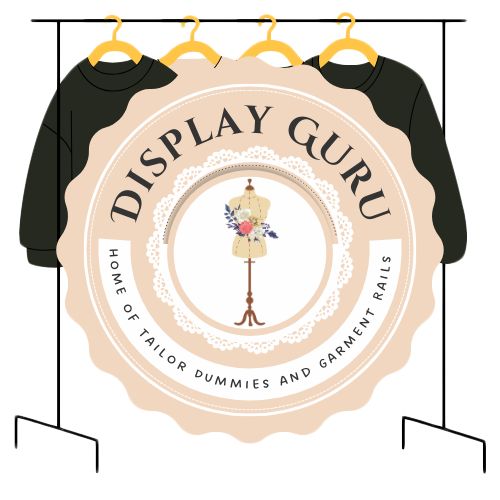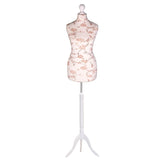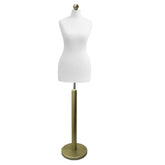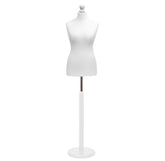Top Sewing Organizers Boxes for a Tidy Craft Space
A proper sewing organiser box is one of those simple things that can completely transform your creative space. It's more than just a container; it’s a purpose-built system designed to turn a cluttered craft corner into a hub of efficiency. With dedicated spots for everything from spools of thread to those tiny, runaway buttons, it protects your supplies and, more importantly, saves you precious time. Instead of hunting for notions, you can get straight to the joy of making.
From Creative Chaos to Calm Control

Every sewist knows the feeling. It starts with a stray pin cushion, then a tangle of threads, and before you know it, you're spending more time digging for a specific zipper than actually sewing. This kind of creative chaos doesn't just slow you down; it can sap your inspiration before you've even made a single stitch.
Moving on from makeshift containers like old biscuit tins to a dedicated system is a genuine game-changer. I like to think of it as creating a 'mise en place' for sewing—that brilliant French culinary term for having all your ingredients prepped and organised before you start cooking. With a proper sewing box, everything has its place, ready and waiting.
An organised space isn't just about being tidy. It's the foundation for efficiency and creativity. When you remove the frustration of searching for supplies, you free up mental energy to focus on the craft itself.
This shift towards structured storage isn't just happening in our sewing rooms; it's part of a wider trend. The UK storage market has grown significantly as more people seek out minimalist and efficient ways to use their space. In fact, projections show the market for storage boxes is expected to grow by about 6.5% annually between 2026 and 2033, which shows just how much we all value specialised, durable organisers. You can find out more about this market growth on verifiedmarketreports.com.
The Benefits of a Structured System
Investing in proper sewing organiser boxes brings immediate, practical benefits that genuinely improve your crafting experience. It’s the first real step towards building a more functional and inspiring workspace.
- It Protects Your Supplies: Delicate threads are kept safe from dust and sunlight, sharp needles are stored securely, and your fabrics stay clean and uncreased.
- It Saves You Precious Time: No more frantic searching. An organised box means you can find exactly what you need in seconds, letting you keep your creative momentum going.
- It Inspires Creativity: A clean, ordered environment is calming. It reduces stress and allows your ideas to flow freely, making your time spent sewing far more joyful and productive.
Ultimately, getting your tools in order isn’t a chore—it’s an investment in your hobby. For more brilliant sewing room ideas to create your ideal craft haven, check out our guide.
How to Choose Your Perfect Sewing Organiser
Finding the right sewing organiser is a bit like choosing a new creative partner. It has to suit your unique style, your workflow, and even your future projects. When you find one that feels like it was made just for you, it does more than just tidy up your workspace—it makes the entire creative process feel smoother and more enjoyable.
To get started, let's talk about materials. Each one brings its own unique blend of style, sturdiness, and practicality to the table. Traditional wooden cantilever boxes, for example, have that timeless, classic feel and are often built so well they become family heirlooms. On the flip side, modern plastics are lightweight, incredibly resilient, and super easy to wipe clean.
Then there are fabric organisers. These are a popular choice for their flexibility and soft-sided design, which is perfect for protecting delicate tools and notions. Ultimately, what you choose will come down to personal taste and how you plan to use it.
Comparing Sewing Organiser Materials
Choosing the right material is a balancing act between aesthetics, durability, and how you work. This table breaks down the most common options to help you decide.
| Material | Best For | Durability | Portability | Average Price |
|---|---|---|---|---|
| Plastic | Everyday use, portability, and easy cleaning. Great for beginners. | High | Excellent | £15 - £40 |
| Wood | A permanent fixture in a craft room; a classic, heirloom-quality piece. | Very High | Low | £40 - £100+ |
| Fabric | Travel, small spaces, and protecting delicate items. | Moderate | Excellent | £20 - £50 |
| Metal | Heavy-duty storage for workshops and professional settings. | Very High | Low to Moderate | £30 - £80 |
As you can see, a lightweight plastic or fabric box is ideal for taking to a class, while a sturdy wooden chest is a beautiful statement piece for a dedicated sewing corner.
Think About Your Supplies Today and Tomorrow
Now, take an honest look at your current stash and think about where it's headed. It’s tempting to buy a box that perfectly fits what you have right now, but a smarter move is to plan for the collection you'll have a year from now. Start with the bigger items—your fabric scissors, rotary cutters, and long rulers all need a proper home.
Next, consider all those little bits and bobs. A truly great system will have dedicated nooks and crannies for things that love to get lost, like bobbins, needles, and stray buttons. If your collection is growing fast, look into modular or stackable sewing organisers that can expand along with your hobby.
A little foresight now saves you from outgrowing your storage solution in six months. Home sewing has seen a huge resurgence; in fact, the UK sewing machine market alone brought in USD 116.7 million and is expected to keep growing. This boom means more of us are collecting more tools, making smart storage more important than ever. You can see more data on UK sewing trends over on Grand View Research.
The image below gives a snapshot of what materials fellow sewists are currently choosing.

As you can see, plastic organisers are the clear favourite, making up 50% of the market. It's no surprise, given how versatile and affordable they are. Wood and fabric options follow, each catering to different priorities, whether that's classic aesthetics or soft, flexible storage.
Key Features to Look For
Beyond just the material and size, a few specific features can make a world of difference to how useful an organiser is. The best sewing organisers are designed by people who actually sew, and they include small details that make your crafting life that much easier.
- Adjustable Dividers: These are brilliant. They let you customise compartments to perfectly fit everything from long quilting rulers to tiny packets of machine needles.
- Transparent Lids or Drawers: See-through elements are a game-changer. Being able to spot what you need at a glance saves you from endlessly digging around.
- Secure Latches: There’s nothing worse than a sewing box spill. Strong, reliable latches are an absolute must, especially if you plan on taking your kit on the road.
- Portability: If you go to classes or sewing groups, look for a lightweight design with a comfortable, sturdy handle. Your shoulders will thank you.
Choosing an organiser is really about anticipating your own needs. A box with transparent drawers might seem like a minor detail, but it can save you precious minutes of searching, letting you stay in the creative zone.
In the end, you're looking for a storage solution that feels like a natural part of your creative space. For a deeper dive into specific designs, you might want to learn more about a dedicated sewing accessory box and see how it could streamline your setup. By thinking through these factors, you can find a box that will serve you well for many years of happy sewing.
A Field Guide to Sewing Organiser Types

Stepping into the world of sewing organisers can feel a bit like exploring a new ecosystem. There's a solution for every type of creative, and understanding the main varieties is the first step to finding one that truly fits your workflow. Think of this as your personal guide to navigating the options.
Let's start with a true classic: the cantilever sewing box. You've likely seen one before, often beautifully crafted from wood. They're the traditional treasure chests of the sewing world.
When you open them, the trays glide outwards and upwards in a single, satisfying motion, revealing multiple tiers of storage all at once. This design is fantastic for sewists who like to see all their notions laid out in front of them before they start. It's both a stunning and practical centrepiece for any craft room.
Modern and Modular Solutions
What about those of us whose collections seem to multiply overnight? That's where stackable modular units come in. These are the building blocks of a truly bespoke organisation system.
Usually made from clear, sturdy plastic, they let you add more storage as your stash of fabric, thread, and tools grows. This flexibility makes them a firm favourite with quilters and dressmakers, who often need a huge range of supplies on hand. Being able to see what’s inside a drawer without opening it is a massive time-saver.
For more inspiration on using drawer systems effectively, our guide to crafts storage drawers has some great ideas for creating a tidy, efficient workspace.
The best organisation system doesn't just hold what you have now; it makes room for what you'll have in the future. Modular boxes offer the freedom to expand with your passion, so you never outgrow your setup.
Specialised and Portable Organisers
Of course, some supplies need a very specific kind of home. Specialised sewing organisers are designed to tackle the most common (and chaotic) parts of a collection, bringing a welcome sense of order.
- Thread Racks and Spool Boxes: These are lifesavers for keeping dozens of thread spools visible and tangle-free. Wall-mounted racks are brilliant for freeing up desk space, while clear boxes keep your threads protected from dust.
- Bobbin Towers and Rings: Say goodbye to that frustrating bird's nest of bobbin threads! These clever little holders keep your bobbins neat, tidy, and easy to pair with their matching spools.
- Portable Project Cases: An absolute must for the sewist on the go. These compact, secure cases are built to hold everything you need for a single project, making them perfect for taking to classes, retreats, or even just another room in the house.
Ultimately, picking the right organiser is about matching the solution to your unique way of working. Whether that's a classic all-in-one box or a mix of stackable units and specialised holders, the aim is always the same: to make finding your tools just as joyful as the craft itself.
Mastering Your Notion Organisation System
Having one of the best sewing organisers boxes is a brilliant start, but the real magic happens when you create a system that works for you. An organiser without a system is like a library with no catalogue—you’ve got all the books, but finding the one you need is a frustrating guessing game. The aim is to build a setup so logical you don’t even have to think about it.
Think of your sewing box like a mechanic's toolbox. They never have to rummage for the right spanner; they know exactly where to reach. Your sewing supplies deserve that same level of order. It's less about being tidy for the sake of it and more about spending less time searching and more time creating.
Taming Your Threads and Tools
Let’s start with the biggest culprit for sewing room chaos: thread. A tangled jumble of spools isn't just messy—it can damage the thread and bring your project to a halt. One of the simplest, most effective tricks is to group them by colour, laying them out like a rainbow. This simple visual cue makes finding the right shade almost instantaneous.
If you’ve got a mountain of spools, you might want to sort them by material, too. Keeping your cottons, polyesters, and specialty threads separate means you'll always grab the right type for your fabric.
Now for the sharp bits. Needles, pins, and rotary cutters need to be stored safely but must also be easy to get to.
- Needles and Pins: Magnetic pin dishes or small, labelled tins placed inside your main box are perfect. I find it’s a real game-changer to group machine needles by type and size (e.g., "Jeans 90/14," "Stretch 75/11").
- Rotary Cutters and Scissors: Set aside a specific long compartment just for these. Always store them with the blades retracted or covered to protect their edges and save your fingers from nasty surprises.
The secret to any great organisation system is simple: group like with like. When you create logical homes for everything, you stop the guesswork and keep your creative momentum going.
This principle applies to all your haberdashery. Buttons, zips, snaps, and hooks should all have their own designated spots. Small, clear containers or trays with dividers are ideal for this, as they let you see what you have in a single glance.
Building a System That Grows With You
A system only works if you actually stick with it. It needs to feel natural to how you sew, not like a chore you have to complete. One way to make sure your setup serves your needs is to plan your projects in advance. Our guide on creating a sewing project planner is a great resource for aligning your storage with your creative pipeline.
As your stash of notions inevitably grows, your system needs to be able to adapt. This is where sewing organisers boxes with adjustable dividers truly prove their worth. You can easily shift things around to make room for new supplies without having to overhaul your entire setup.
Ultimately, you're creating a functional sanctuary for your craft. For more fantastic ideas, this ultimate guide to organizing craft supplies offers a broader look at keeping all your essentials in order. A little time spent setting up a smart system now pays off with a smoother, more enjoyable, and far more productive sewing life for years to come.
Thinking Beyond the Box in Your Craft Space

A fantastic sewing organiser is the heart of any tidy craft space, but real efficiency comes from looking at the bigger picture. To create a truly seamless workflow, your storage needs to work in harmony with the rest of your setup. It's about turning a simple corner into a functional sanctuary where every tool, from your machine to your scissors, has its own logical home.
Think of your sewing organisers boxes as the central hub, with the rest of your space acting as the spokes of a wheel. Every element should connect logically, cutting down on wasted movement and giving you more time to create. The goal is to build an environment so intuitive that you can reach for what you need without breaking your concentration.
This holistic approach means stretching your organisational strategy beyond the box itself. It’s about designing a space that supports your craft from the first cut to the final stitch.
Crafting a Cohesive Workspace
First things first, take a look at how you actually use your space. An ergonomic setup where your sewing machine, cutting mat, and main organiser are all within easy reach can drastically reduce physical strain and send your productivity soaring. It helps to think about the "sewing triangle"—a concept much like the kitchen triangle—where your chair, machine, and ironing board form an efficient little work zone.
Clever DIY storage hacks can also play a huge part in pulling your space together. These solutions are brilliant for keeping your most-used tools visible and accessible, rather than having them tucked away.
- Pegboards: These are incredibly versatile for hanging up scissors, rotary cutters, and rulers. You can customise the layout with different hooks and small baskets, creating a visual inventory of your essential tools.
- Magnetic Strips: A magnetic knife strip from the kitchen is a fantastic way to keep metal tools like scissors, snips, and seam rippers off your desk but always within arm's reach.
- Wall-Mounted Shelves: Popping up a few simple shelves above your sewing table gives you the perfect spot for fabric baskets, project bins, or even your collection of sewing pattern books.
By integrating your storage with your workspace, you create a system where your sewing organisers boxes are part of a larger, smarter ecosystem. This turns a tidy corner into a truly dynamic creative hub.
The Hidden Logistics of Organisation
It's interesting to think that even the way your sewing organisers arrive at your door is part of a much larger system. With the boom in online shopping, packaging has become a critical part of the supply chain for craft supplies. Most sewing organisers boxes are shipped in corrugated boxes, a choice driven by the need for robust protection and cost-efficiency. This type of packaging can offer cost savings of 7–36% and provides 30% greater stacking strength than other options. Innovations like fit-to-product boxes also help sellers cut down on waste by minimising filler material, which is better for their budgets and the planet. You can learn more about packaging innovations in the UK market by visiting mordorintelligence.com.
Ultimately, thinking beyond the box is about creating a deliberate, thoughtful environment. By combining a great organiser with smart workspace design and a few clever DIY hacks, you build more than just a tidy room. You craft an inspiring sanctuary that supports your creativity, every single stitch of the way.
Your Top Sewing Organisation Questions Answered
Even when you think you've found the perfect system, a few questions always pop up. That’s completely normal! Getting your sewing space just right is a process of trial and error. Let’s tackle some of the most common queries I hear about using sewing organiser boxes to their full potential.
Think of this as a quick troubleshooting guide. A few simple answers can make a world of difference in keeping your creative space functional, not just for today, but for every project that comes next.
What Size Sewing Box Should I Get?
This is probably the number one question I get asked, and it's a tricky one. My best advice? Think bigger than you need right now.
First, get everything out. I mean everything—all your scissors, threads, bobbins, and bits and bobs. Spreading it all out gives you a real, tangible sense of how much space your supplies actually take up.
Now, here’s the key: don’t buy a box that just barely fits it all. I always recommend aiming for an organiser that’s about 25% larger than your current stash. That little bit of extra room is your buffer zone, giving you space to grow without having to buy a whole new storage system in six months. If you know you're a keen collector, modular and stackable boxes are a brilliant choice because they can expand right along with your hobby.
How Do I Keep My Organiser Tidy?
An organised sewing box doesn't stay that way by magic; it's all about small, consistent habits. The most powerful trick in the book is what I call the "one-minute tidy." Before you finish a sewing session, just take 60 seconds to put stray threads, pins, and tools back where they belong. It’s that simple.
A tidy system is maintained with small, consistent actions, not massive overhauls. Making it a habit to put things away immediately prevents clutter from ever taking hold, ensuring your workspace is always ready for your next project.
Another great practice is to have a seasonal clear-out. Once or twice a year, take a good look through your supplies. Anything you haven’t touched in a year? It might be time to pass it on. This stops your best storage real estate from being clogged up with things you no longer use. For a deeper dive, our complete guide to sewing room organization is packed with more ideas.
What Is the Best Way to Store Sewing Patterns?
Ah, sewing patterns. Their flimsy paper and awkward sizes can be a real headache to store neatly. The aim is to keep them flat, protected, and easy to browse. After years of trying different methods, these are my top three:
- Plastic Folders or Envelopes: This is my go-to. Pop individual patterns into clear A4 plastic sleeves or large envelopes. You can label the front and then file them upright in a box file, almost like a library.
- Hanging Storage: Got a few favourite, large-format patterns you use all the time? Try hanging them on clip-style trouser hangers. This keeps them perfectly flat and easy to grab from a wardrobe or rail.
- Digital Backups: If you use PDF patterns, a cloud backup is non-negotiable. Save a copy somewhere safe online, and you'll never have that heart-stopping moment of thinking you've lost a beloved design for good.
If you categorise them by garment type—dresses, tops, trousers—you’ll be able to find exactly what you’re looking for in seconds.
At Display Guru, we're all about providing the tools you need to build an efficient and inspiring creative space. Explore our range of solutions and find the perfect fit for your sewing studio.








